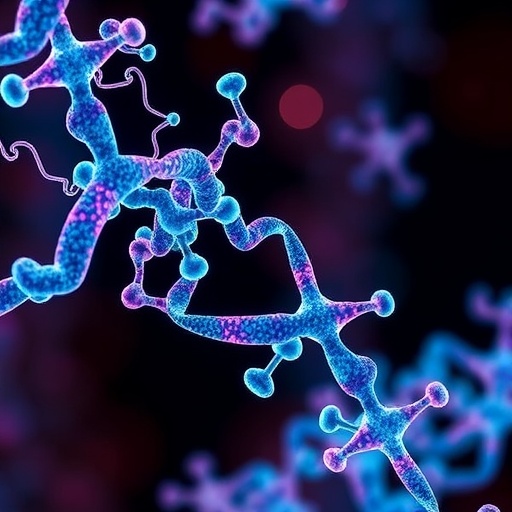In the relentless pursuit of novel therapeutic targets for ovarian cancer, a growing body of research is turning its spotlight onto a class of motor proteins known as the kinesin superfamily proteins (KIFs). These molecular motors, pivotal for intracellular transport and mitotic processes, have emerged as critical players in the oncogenic landscape of ovarian cancer, reshaping our understanding of tumorigenesis and paving the way for innovative clinical interventions.
Ovarian cancer remains one of the deadliest gynecological malignancies worldwide, primarily due to its late diagnosis and high recurrence rates. Traditional therapeutic approaches, including surgery and chemotherapy, often fail to yield sustained remission, highlighting an urgent need for targeted therapies grounded in molecular precision. In this context, kinesin proteins have drawn intense scrutiny, given their essential role in mitotic spindle dynamics and intracellular trafficking—processes profoundly altered in cancer cells.
Kinesin superfamily proteins are microtubule-dependent motor proteins that convert the chemical energy from ATP hydrolysis into mechanical work, propelling cargo such as organelles, protein complexes, and chromosomes along microtubules. Dysregulation of these motors in ovarian cancer disrupts cellular homeostasis, enabling aberrant cell proliferation, migration, and survival—hallmarks that fuel tumor progression and metastasis.
Recent molecular investigations have highlighted the overexpression of various KIF members in ovarian tumor tissues compared to normal ovarian epithelium. This aberrant expression pattern is often correlated with poor prognosis, chemoresistance, and enhanced invasive potential, underscoring the oncogenic capacity of kinesins beyond their canonical cellular functions. Among these, kinesins involved in chromosome segregation and spindle assembly, such as KIF11 and KIF14, have garnered particular attention for their compelling role in mitotic fidelity and aneuploidy prevention.
At the biochemical level, KIF deregulation facilitates mitotic errors by disrupting spindle architecture and kinetochore-microtubule attachments. Such disturbances contribute to chromosomal instability—a driving force behind genetic heterogeneity and drug resistance in ovarian tumors. Understanding the precise mechanistic underpinnings by which KIFs modulate spindle dynamics in cancer cells has been instrumental in identifying vulnerabilities amenable to pharmacologic exploitation.
In this vein, the development of small-molecule inhibitors targeting kinesin motor domains represents an exciting frontier. Drugs like ispinesib and filanesib, which inhibit KIF11, have demonstrated antiproliferative effects in preclinical ovarian cancer models by inducing mitotic arrest and apoptosis. These findings underscore the translational potential of kinesin-targeted therapies, which may circumvent resistance mechanisms associated with conventional cytotoxic agents.
Moreover, the multifunctional nature of kinesins extends their impact beyond mitosis; several KIFs facilitate the intracellular trafficking of signaling molecules and vesicles that modulate tumor microenvironment interactions. This adds an additional layer of complexity, positioning kinesins as integrators of both proliferative signaling and metastatic dissemination pathways—a dual role that emphasizes their value as biomarkers and therapeutic targets.
Immunohistochemical analyses of patient-derived ovarian tumors have identified distinct kinesin expression profiles that not only correlate with disease stage but also predict responsiveness to platinum-based chemotherapy. This predictive capacity opens avenues for personalized medicine, where kinesin expression signatures can inform treatment decision-making and prognostication, ultimately enhancing clinical outcomes.
In parallel, advances in genomics and proteomics have unveiled mutations and post-translational modifications affecting kinesin function, providing deeper insights into oncogenic signaling networks. For example, phosphorylation events regulating kinesin activity represent a fine-tuning mechanism that cancer cells exploit to adapt to proliferative and environmental demands, highlighting opportunities for combinatorial therapeutic strategies.
The exploration of kinesins in ovarian cancer is further enriched by emerging evidence linking these proteins to cancer stem cell maintenance. By modulating cytoskeletal dynamics and cell polarity, kinesins may preserve the self-renewal and survival capacity of stem-like tumor cells, which are often implicated in relapse. Targeting these motors could therefore represent a strategy to eradicate resistant tumor-initiating populations.
From a clinical perspective, ongoing trials assessing kinesin inhibitors’ safety and efficacy are optimistic yet underscore the need for biomarker-driven patient selection to maximize therapeutic benefits. Combining kinesin-targeted drugs with immunotherapies and conventional treatments is currently under evaluation, aiming to exploit synergistic effects and overcome tumor heterogeneity challenges.
Looking ahead, groundbreaking technologies such as CRISPR-based gene editing and high-resolution live-cell imaging hold promise to delineate kinesin functional dynamics in real time, enabling precision targeting of their oncogenic activities. The integration of these methodologies with systems biology approaches will accelerate the translation of basic kinesin biology into clinical practice.
In summary, the kinesin superfamily proteins are transforming from mere mechanistic housekeeping motors to pivotal mediators of ovarian cancer pathophysiology. Their diverse roles in mitosis, intracellular transport, and tumor microenvironment modulation position them at the crossroads of cancer biology and therapeutic innovation. Harnessing the molecular intricacies of KIFs offers a paradigm shift in combating ovarian cancer, bringing hope for more effective, targeted treatments in the near future.
Subject of Research:
Kinesin superfamily proteins and their molecular and clinical roles in ovarian cancer.
Article Title:
Kinesin superfamily proteins in ovarian cancer: from molecular mechanisms to clinical applications.
Article References:
Bishoyi, A.K., Al-Hasnaawei, S., Ganesan, S. et al. Kinesin superfamily proteins in ovarian cancer: from molecular mechanisms to clinical applications. Med Oncol 42, 483 (2025). https://doi.org/10.1007/s12032-025-03044-1
Image Credits: AI Generated
DOI: 10.1007/s12032-025-03044-1
Keywords:
Kinesin superfamily proteins, ovarian cancer, mitosis, intracellular transport, molecular mechanisms, targeted therapy, tumor microenvironment, chemoresistance




